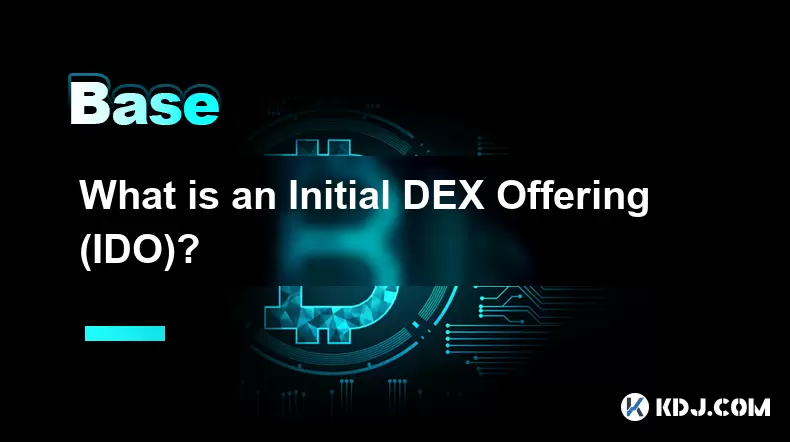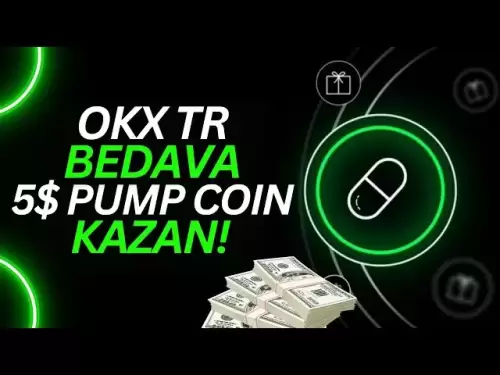-
 Bitcoin
Bitcoin $117400
-0.46% -
 Ethereum
Ethereum $3768
0.60% -
 XRP
XRP $3.551
2.09% -
 Tether USDt
Tether USDt $1.000
0.00% -
 Solana
Solana $203.2
11.30% -
 BNB
BNB $770.9
1.92% -
 USDC
USDC $0.9999
0.01% -
 Dogecoin
Dogecoin $0.2709
-0.02% -
 Cardano
Cardano $0.9024
4.49% -
 TRON
TRON $0.3139
0.60% -
 Hyperliquid
Hyperliquid $45.60
-1.41% -
 Stellar
Stellar $0.4730
-1.34% -
 Sui
Sui $4.025
2.15% -
 Chainlink
Chainlink $19.79
2.19% -
 Hedera
Hedera $0.2724
-2.39% -
 Avalanche
Avalanche $25.93
3.05% -
 Bitcoin Cash
Bitcoin Cash $524.0
-1.83% -
 Shiba Inu
Shiba Inu $0.00001558
0.50% -
 Litecoin
Litecoin $116.7
-0.30% -
 UNUS SED LEO
UNUS SED LEO $8.996
0.00% -
 Toncoin
Toncoin $3.334
1.83% -
 Polkadot
Polkadot $4.506
0.34% -
 Uniswap
Uniswap $10.99
4.83% -
 Ethena USDe
Ethena USDe $1.001
0.03% -
 Pepe
Pepe $0.00001461
3.17% -
 Monero
Monero $320.3
-1.01% -
 Bitget Token
Bitget Token $4.935
0.36% -
 Dai
Dai $0.9998
0.00% -
 Aave
Aave $322.4
-1.25% -
 Bittensor
Bittensor $455.6
9.33%
What is an Initial DEX Offering (IDO)?
An Initial DEX Offering (IDO) is a decentralized fundraising method where blockchain projects launch tokens directly on a decentralized exchange, offering transparency and immediate liquidity.
Jul 21, 2025 at 07:28 pm

What is an Initial DEX Offering (IDO)?
An Initial DEX Offering (IDO) is a decentralized fundraising mechanism that allows blockchain-based projects to raise capital by launching their tokens directly on a decentralized exchange (DEX). Unlike traditional fundraising methods such as Initial Coin Offerings (ICOs) or Initial Exchange Offerings (IEOs), IDO platforms operate on decentralized finance (DeFi) protocols, offering a more transparent and permissionless way for new projects to distribute their tokens.
How Does an IDO Work?
In an IDO, the project team partners with a decentralized launchpad or platform that facilitates the token sale. These platforms are typically built on blockchains like Ethereum, Binance Smart Chain, or Solana. The process involves several key steps:
- Project Due Diligence: Before being listed, projects often undergo some form of verification or audit by the launchpad to ensure legitimacy and reduce the risk of scams.
- Token Creation: The project creates its native token using a standard like ERC-20 or BEP-20.
- Liquidity Pool Setup: After the token sale, the project typically locks a portion of the raised funds and tokens into a liquidity pool on a decentralized exchange like Uniswap or PancakeSwap.
- Token Sale: Investors can participate by connecting their wallets (e.g., MetaMask) and purchasing the new token during the sale window.
- Immediate Trading: Once the IDO concludes, the token is immediately tradable on the connected DEX, providing instant liquidity.
Key Differences Between IDO, ICO, and IEO
While ICOs and IEOs were popular in earlier crypto cycles, IDOs offer a more trustless and decentralized approach to fundraising.
- ICO (Initial Coin Offering): Conducted directly by the project team, often centralized and prone to fraud. Tokens are usually sold on the project's own website.
- IEO (Initial Exchange Offering): Hosted on centralized exchanges that conduct due diligence and manage the sale. However, they can be exclusive and expensive for smaller projects.
- IDO (Initial DEX Offering): Entirely decentralized, conducted on DEX launchpads, and accessible to anyone with a compatible wallet. It eliminates intermediaries and provides immediate liquidity.
Popular IDO Launchpad Platforms
Several platforms specialize in hosting IDOs, each with its own set of features, requirements, and user base. Some of the most well-known include:
- BscPad: Built on Binance Smart Chain, it offers fair launch mechanisms and tiered participation systems.
- Polkastarter: A cross-chain IDO platform that allows token swaps and auctions across multiple blockchains.
- DAO Maker: Known for its community-driven approach and innovative fundraising models like "Whitelist Lottery."
- GameFi: Focuses specifically on gaming and metaverse projects, often hosting IDOs for NFT-based games.
- DuckDAO: A curated launchpad that uses a token-based voting system to decide which projects get listed.
Each platform has its own rules regarding tokenomics, vesting schedules, and investor eligibility. Participants must thoroughly research the platform and project before investing.
How to Participate in an IDO
Participating in an IDO requires preparation and a basic understanding of DeFi tools. Here’s a step-by-by step guide:
- Choose a Launchpad: Research and select a reputable IDO platform that aligns with your interests.
- Connect a Wallet: Use a compatible wallet like MetaMask, Trust Wallet, or WalletConnect to interact with the platform.
- Acquire Native Tokens: Some platforms require holding their native token to qualify for participation or whitelist access.
- Whitelist or Staking Requirements: Certain IDOs require users to stake tokens or join a whitelist to gain early access.
- Participate in the Sale: During the sale period, connect your wallet and send the required amount of cryptocurrency to purchase the new token.
- Claim and Add Liquidity Pool: After the sale, claim your tokens and optionally add them to a liquidity pool if you're a liquidity provider.
Always double-check contract addresses and ensure you're interacting with the official platform to avoid scams.
Risks and Considerations in IDOs
Despite their advantages, IDOs come with significant risks, especially for inexperienced investors:
- Smart Contract Vulnerabilities: Since IDOs rely on smart contracts, any bugs or exploits can lead to loss of funds.
- Market Volatility: New tokens often experience high volatility, and many projects fail shortly after launch.
- Scams and Rug Pulls: Not all projects are legitimate. Some teams may abandon the project or drain liquidity pools after the sale.
- Regulatory Uncertainty: The legal status of IDOs remains unclear in many jurisdictions, which could lead to future compliance issues.
- High Competition: With the popularity of IDOs, many projects compete for attention, making it harder to identify genuine opportunities.
Investors should perform due diligence on the team, whitepaper, roadmap, and audits before participating in any IDO.
Frequently Asked Questions
Q: Are IDOs legal?
A: The legality of IDOs depends on the jurisdiction. In some countries, token sales may be considered securities offerings and require compliance with financial regulations.
Q: How are IDOs different from token swaps?
A: IDOs are primarily fundraising events, while token swaps are mechanisms for migrating tokens from one blockchain to another or rebranding existing tokens.
Q: Can anyone launch an IDO?
A: While IDOs are more accessible than IEOs, many platforms have vetting processes or require project teams to meet certain criteria, such as audits or KYC verification.
Q: What happens if I miss the IDO sale?
A: If you miss the initial sale, you can often buy the token on the associated DEX after liquidity is added, though the price may be significantly higher due to early market demand.
Disclaimer:info@kdj.com
The information provided is not trading advice. kdj.com does not assume any responsibility for any investments made based on the information provided in this article. Cryptocurrencies are highly volatile and it is highly recommended that you invest with caution after thorough research!
If you believe that the content used on this website infringes your copyright, please contact us immediately (info@kdj.com) and we will delete it promptly.
- MoonBull's Whitelist Mania: Your Last Shot at 100x Crypto Gains?
- 2025-07-22 10:30:12
- Meme Coins in 2025: Explosive Gains or Fading Fad?
- 2025-07-22 10:30:12
- Kim Keon-hee Crypto Probe: Scandal Rocks South Korea's Political Scene
- 2025-07-22 10:50:12
- ETH Holders in Profit: Value Surge Fuels Bullish Sentiment
- 2025-07-22 09:30:13
- NEAR Protocol's AI Leap: Double-Digit Gains and Future Potential
- 2025-07-22 09:30:13
- Cryptos, Meme Coins, Buy Now: Riding the Wave of Hype
- 2025-07-22 08:30:13
Related knowledge

What is the difference between CeFi and DeFi?
Jul 22,2025 at 12:28am
Understanding CeFi and DeFiIn the world of cryptocurrency, CeFi (Centralized Finance) and DeFi (Decentralized Finance) represent two distinct financia...

What is the difference between a sidechain and a Layer 2?
Jul 20,2025 at 11:35pm
Understanding the Concept of SidechainsA sidechain is a separate blockchain that runs parallel to the main blockchain, typically the mainnet of a cryp...

What is the Inter-Blockchain Communication Protocol (IBC)?
Jul 19,2025 at 10:43am
Understanding the Inter-Blockchain Communication Protocol (IBC)The Inter-Blockchain Communication Protocol (IBC) is a cross-chain communication protoc...

How does sharding improve scalability?
Jul 20,2025 at 01:21am
Understanding Sharding in BlockchainSharding is a database partitioning technique that is increasingly being adopted in blockchain technology to enhan...

What is the "crypto trilemma" of scalability, security, and decentralization?
Jul 19,2025 at 06:28pm
Understanding the Concept of the Crypto TrilemmaThe crypto trilemma refers to the challenge of simultaneously achieving scalability, security, and dec...

What is a cliff and vesting schedule in tokenomics?
Jul 20,2025 at 10:28am
What Does a Cliff Mean in Tokenomics?In tokenomics, a cliff refers to a specific period during which token holders are not allowed to access or transf...

What is the difference between CeFi and DeFi?
Jul 22,2025 at 12:28am
Understanding CeFi and DeFiIn the world of cryptocurrency, CeFi (Centralized Finance) and DeFi (Decentralized Finance) represent two distinct financia...

What is the difference between a sidechain and a Layer 2?
Jul 20,2025 at 11:35pm
Understanding the Concept of SidechainsA sidechain is a separate blockchain that runs parallel to the main blockchain, typically the mainnet of a cryp...

What is the Inter-Blockchain Communication Protocol (IBC)?
Jul 19,2025 at 10:43am
Understanding the Inter-Blockchain Communication Protocol (IBC)The Inter-Blockchain Communication Protocol (IBC) is a cross-chain communication protoc...

How does sharding improve scalability?
Jul 20,2025 at 01:21am
Understanding Sharding in BlockchainSharding is a database partitioning technique that is increasingly being adopted in blockchain technology to enhan...

What is the "crypto trilemma" of scalability, security, and decentralization?
Jul 19,2025 at 06:28pm
Understanding the Concept of the Crypto TrilemmaThe crypto trilemma refers to the challenge of simultaneously achieving scalability, security, and dec...

What is a cliff and vesting schedule in tokenomics?
Jul 20,2025 at 10:28am
What Does a Cliff Mean in Tokenomics?In tokenomics, a cliff refers to a specific period during which token holders are not allowed to access or transf...
See all articles

























































































